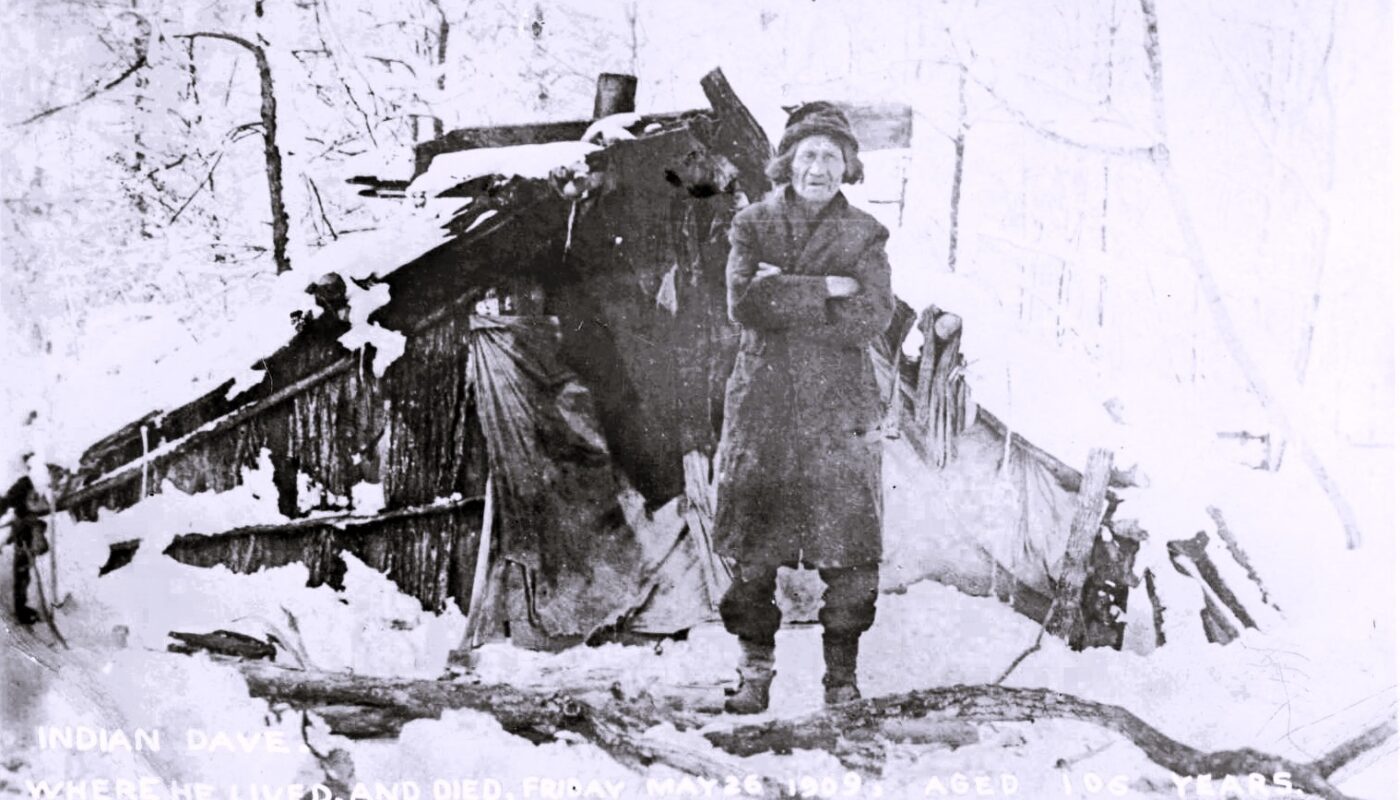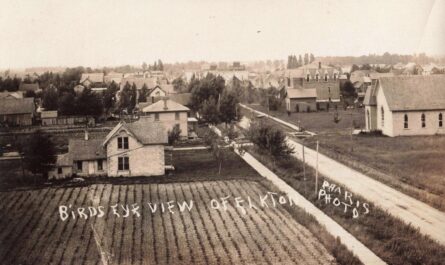While researching for the lastest episode of Michigan Moments, I found an amazing bit of Upper Thumb lore at the University of Michigan library. Dated February 1909, it quite possibility could be the last known picture of the famous lone traveller, Indian Dave who called Tuscola County home in his later years.
Indian Dave (real name David Stocker) was a Native American man who lived to old age in Tuscola County. He was born around 1803 and given the Chippewa name Ishdonquit (“Crossing Cloud”), Local legend says he even attended the 1819 Treaty of Saginaw signing as a child.
He claimed to be the son of Chief Nipmup of the Chippewa, though tribal records treat him as an outcast rather than a hereditary chief’s son. (In county records he is simply listed as David Stocker.) Reservation life did not suit him: he “lived briefly in Detroit before a sudden departure” because it was “no big” to him. In other words, Indian Dave preferred a traditional, itinerant life over settling on the new reservations.
Life and Work in Tuscola County
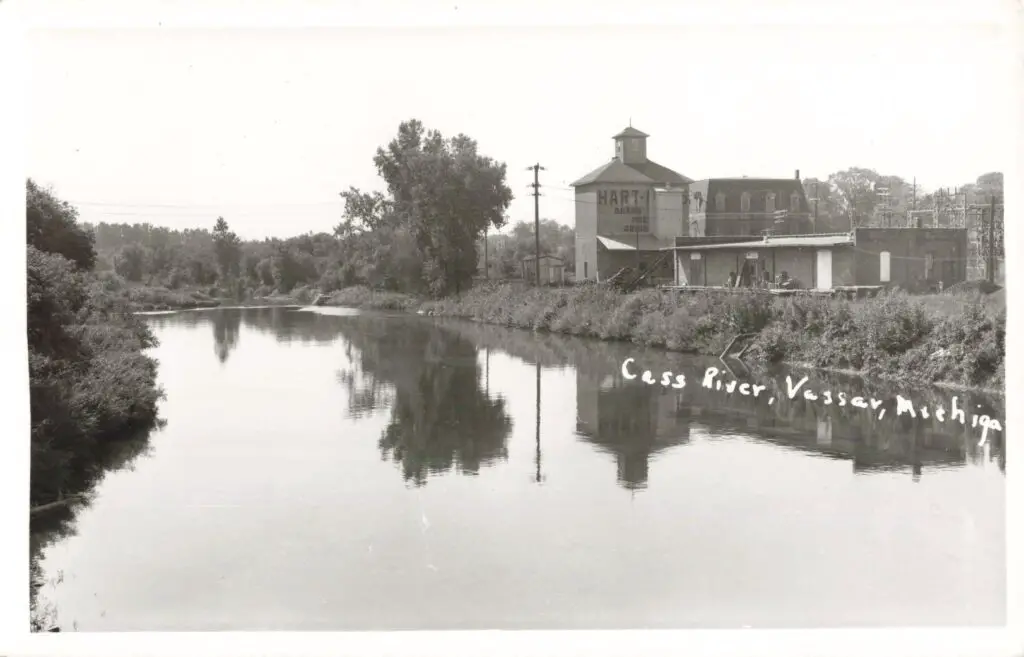
In Tuscola County and the surrounding Thumb region, Indian Dave lived by hunting, fishing, and trading with settlers. He was known as one of the last Chippewa to live in the old ways locally. He trapped animals and caught fish, which he traded or sold to pioneer farmers. He was also a skilled craftsman: he wove baskets, carved wooden toys and bows and arrows, and fashioned other trinkets that he sold or bartered.
Children especially remember him as a teacher of skills – he taught youngsters how to fish, hunt, bake in clay ovens and carve wood. Farmers’ wives recall telling stories of Indian Dave knocking on their cabin doors demanding bread (“Me want bread”) and leaving a fresh northern pike in exchange while they baked the loaves. Settlers trusted him: he often shopped on credit, literally handing shopkeepers a note reading “Me borrow 10 cents, make note” and later repaying it.
Indian Dave spent summers camped near Vassar. Newspaper accounts say that as late as 1907 he wintered in Midland and returned each spring with his son to gather and cure wild ginseng around Murphy’s Lake. He was also said to paddle his canoe up and down Saginaw Bay and even as far north as the Straits of Mackinac, visiting small towns with stories of “days gone by”.
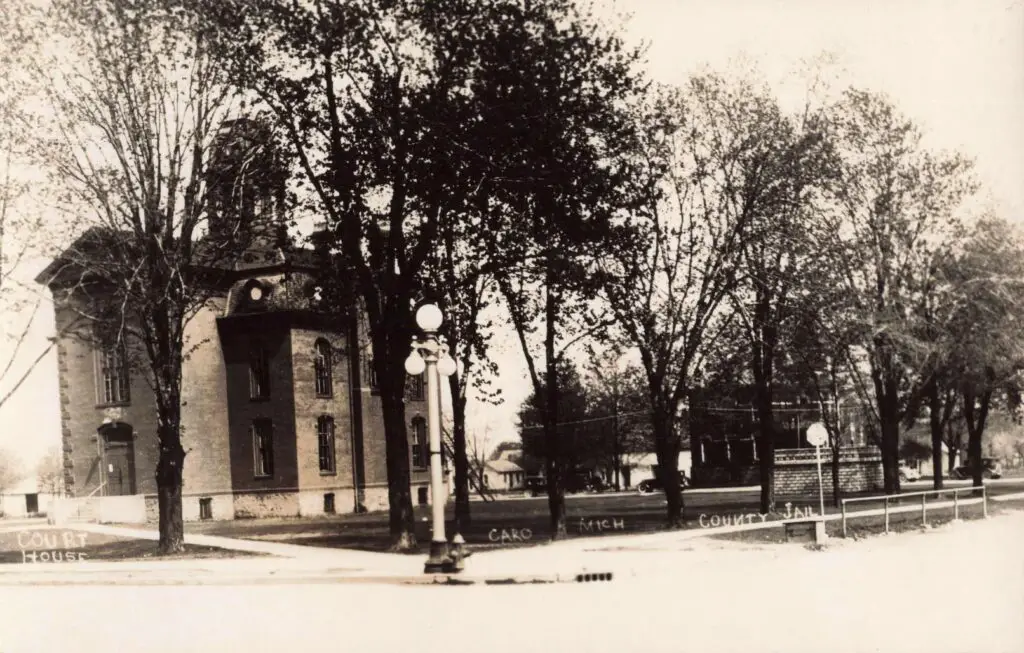
In 1866, during a bitter feud over the county seat, he quietly helped canoe the county records from old Vassar to the new courthouse in Caro. Even in his advanced years he remained active: a 1907 newspaper noted that at about age 104 he was still bright-eyed, quick of step and widely known around the Thumb.
Local Reputation and Interactions
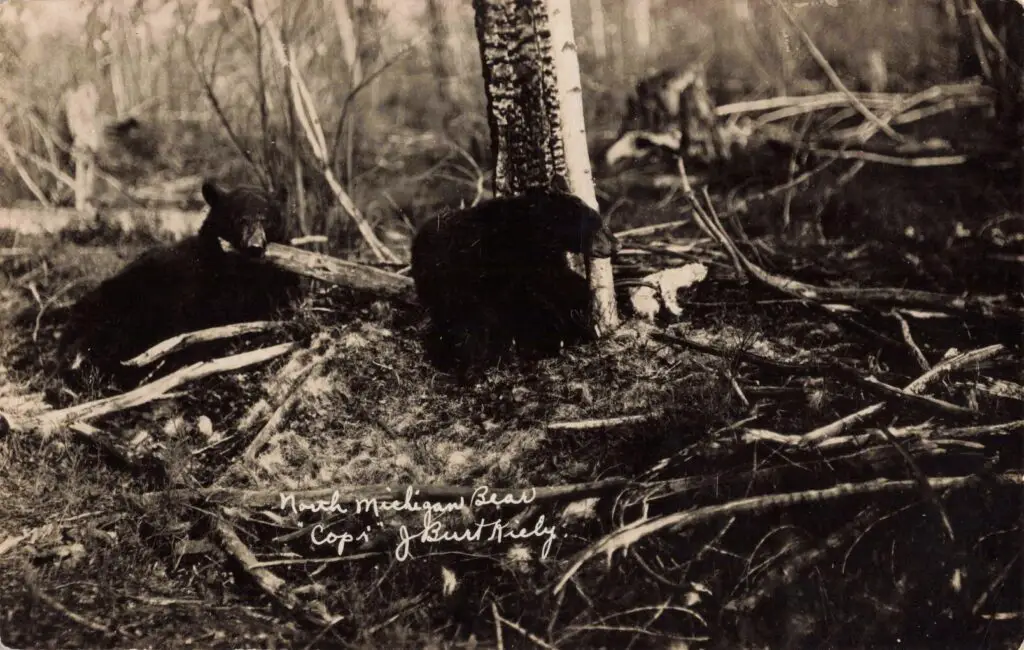
Among local residents, Indian Dave was a beloved character noted for honesty and kindness. He was often invited into pioneer homes, where he might cook or drop off game meat for the family. One neighbor, William Stott, remembered that after a joint bear hunt Dave quietly asked to borrow Stott’s rifle – and after Dave killed the bear, Stott awoke to find a slab of fresh bear meat at his doorstep as thanks.
Grandchildren of early settlers spoke of the “love and trust” their grandparents had in him. Area newspapers later described him as a “Chippewa traveler known for his integrity”. He was so well regarded that local women in the 1970s campaigned to raise money for a historical marker and even researched his genealogy. (They eventually learned he claimed to be Chief Nipmup’s son, but that no written records confirmed his exact lineage.) Today a Michigan historical marker stands near the Wisner Township Cemetery in his honor.
Death and Age Verification
Indian Dave died of old age in the spring of 1909. According to contemporary reports, he passed away on Wednesday, May 26, 1909, in a tent or cabin on his son’s homestead. He was buried shortly after in the Wisner Township Cemetery, though his grave remained unmarked for decades. Newspapers and marker inscriptions long claimed he was 106 years old at death. An obituary noted he believed he had passed his 106th birthday, “though it was questionable whether he knew his exact age”.
Modern historians likewise treat the century-plus age claim with skepticism, since no birth records exist. In any case, if he was born around 1803 he would indeed have been in his 100s when he died. The circumstances of his death were unremarkable; aside from tall tales later debunked (rumors of death by fire or drowning), all sources indicate he simply died quietly of natural causes at the end of May 1909.
Sources
Sonnenberg, Mike. “The Michigan Legend of Indian Dave.” [Lost In Michigan], 11 Jan. 2020, https://lostinmichigan.net/the-legend-of-indian-dave-2/.
Withey, Paige. “Remembering the Upper Thumb’s Indigenous People.” [Michigan’s Thumb], 1 Dec. 2020, https://www.michigansthumb.com/insider/article/Remembering-the-Upper-Thumb-rsquo-s-Indigenous-15763539.php.
“Historical Marker – L761B – Indian Dave.” [MIGenWeb], n.d., https://migenweb.org/natives/bio/IndianDave.pdf.
Dinsmore, Dorothy Stott. Indian Dave’s Travels: A Colorful Character. 1987. Google Books.

